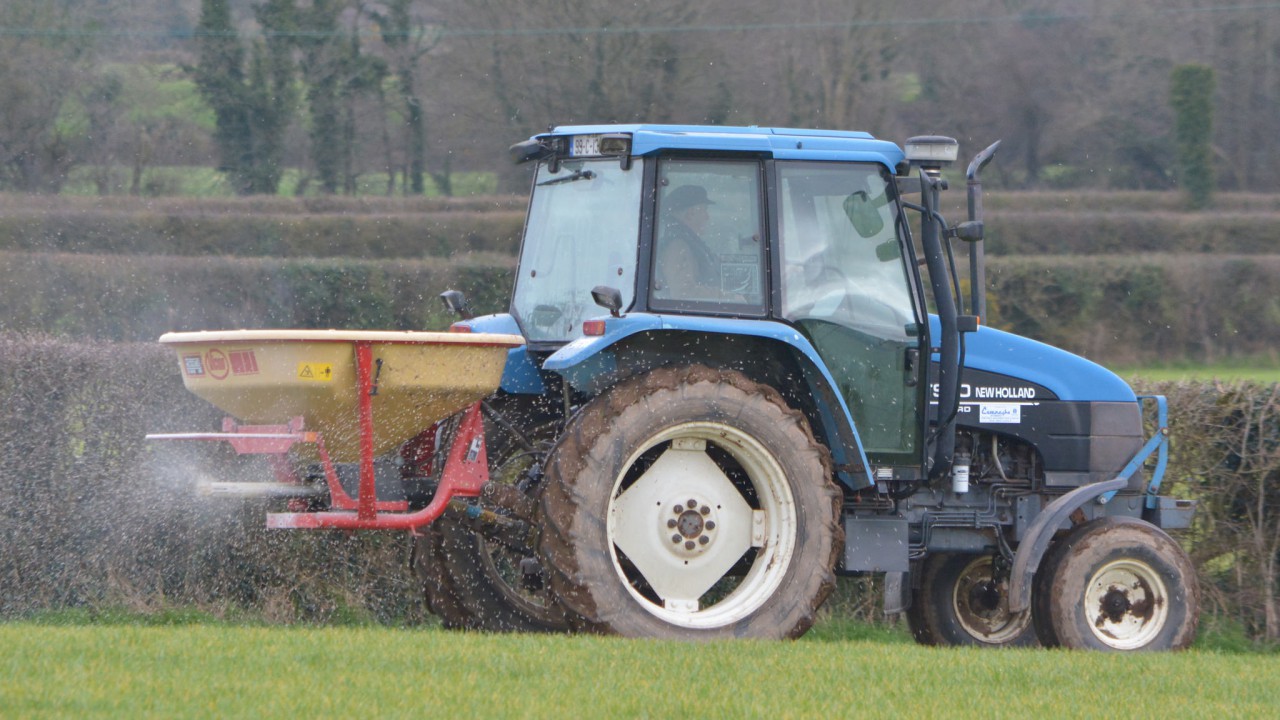Time to get maximum benefit out of your fertiliser
Although in many parts of the country land is tender at best, in other parts ground is in reasonable condition. If this is the case on your farm, now is an ideal time for spreading in order to get the maximum benefit of your fertiliser.
Despite most of the country experiencing high levels of rain fall in recent days, the forecast for the coming week shows that good weather is on the way.
Mid-season fertiliser
At this point of the season, you should only be spreading CAN, protected urea or a compound fertiliser.
Soils that are low in phosphorus (P) or potassium (K) will require compound fertilisers, some such as 18-6-12 or 27-25-5, depending on the amount of P and K required.
During the mid-season grass uses one unit of nitrogen (N)/day. So, for a 21 day rotation, the N requirement is 21 units/ac or 26kg/ha post-grazing.
It is also important that sulphur (S) is include in your mid-season fertiliser applications, S should be included in alternative rounds. N and S should be applied at a ratio of 12:1.
After first-cut silage
The days of treating slurry as a waste product are long gone, slurry is a very valuable resource for replacing nutrients were silage has been cut.
After first-cut silage it is important that fertiliser and slurry is applied to achieve a high yielding quality second cut, and to avoid a drop in soil indexes.
If weather and ground conditions allow, slurry should be spread straight away after cutting, before the grass begins to build up again.
For every 1,000kg/ha of dry matter (DM) that is removed for silage – rather than grazed – will add approximately 2.5kg/ha of P and 25kg/ha of K to the overall P and K requirements for maintenance to a grassland for the year.
Depending on the slurry between 700gals/ac and 1,500 gals/ac, should replace the P and K, that has been taken off for every 1,000kg/ha of grass DM.

